Photo Essay: A Visit to the Connecticut River Valley
30 Aug 2017

Growing up in New York and going to college in Maine, I have many friends from Connecticut. Cigar geeks aside, few realize that not only does Connecticut grow tobacco, but some of the most expensive and sought-after premium cigar wrapper is grown in the Nutmeg State. Recently I visited the Connecticut River Valley (north of Hartford) to see the farms there during the growing season, which runs from summer to early fall. Below are some of the photos from the trip.
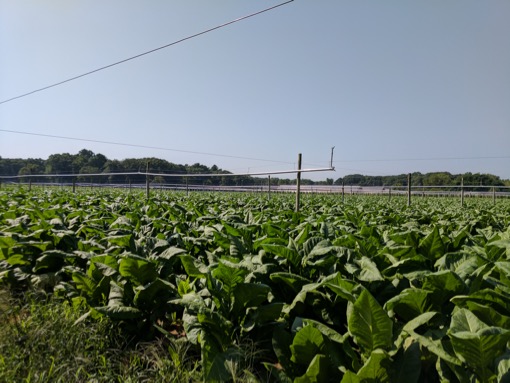
One of the most notable things you quickly see is how each type of tobacco is grown differently to maximize qualities sought in the wrapper they hope it will become. (Inevitably, some leaves will end up as binder or filler; that said, leaves are grown with the intention and hope that they become wrapper, which commands the highest price.)
 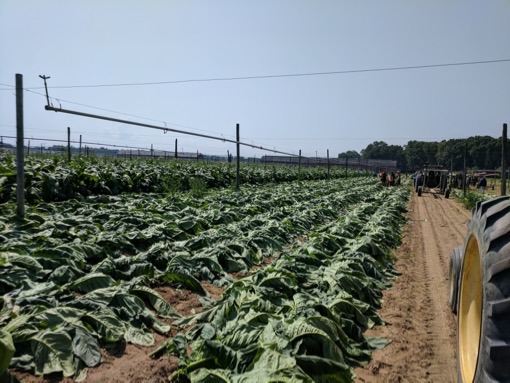
Sun-grown tobacco is topped (the flower at the top is removed) and lower leaves are removed early to maximize the nutrients that reach the leaves intended for tobacco. (Yes, the photo at the top is of the Habano leaf that will eventually become the Partagas Black.)
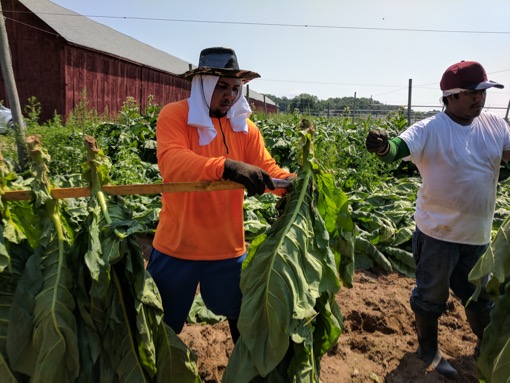
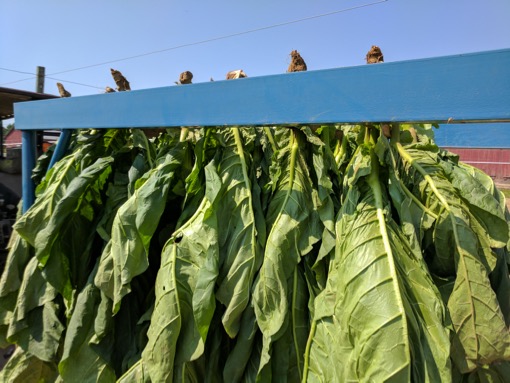
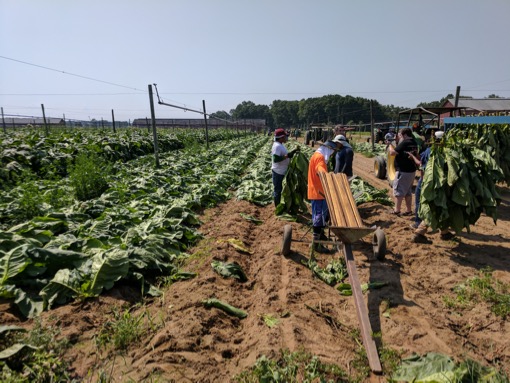
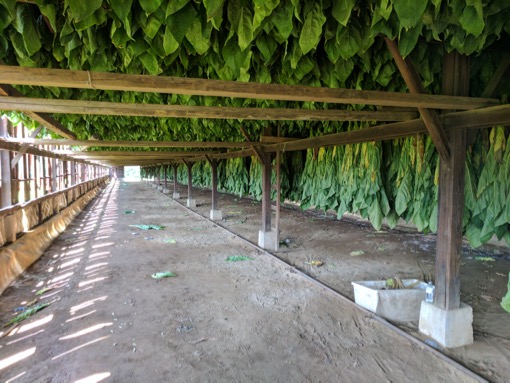
Increasingly, the leaves are then stalk-cured (the ones I saw were speared through the center of the stalk to kick-start curing) so the flavor of the nicotine in the stalk can continue to move into the leaves.
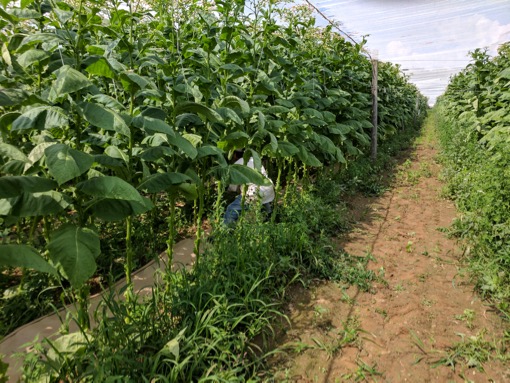
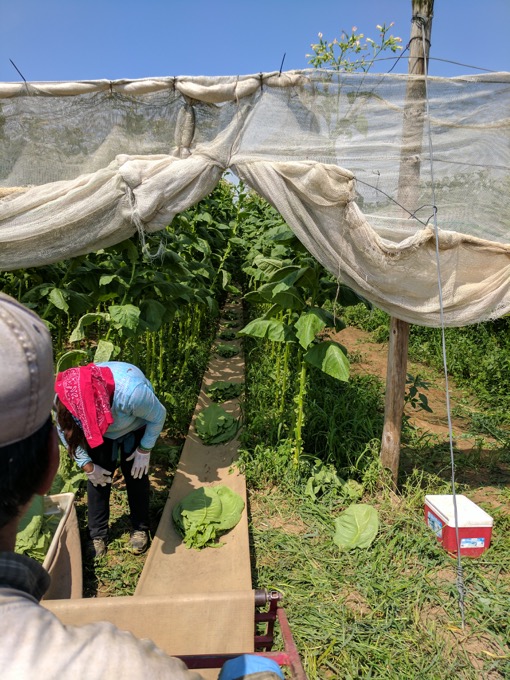
On the opposite end of the spectrum is Connecticut Shade tobacco, which is processed to keep the leaf thin and light. In addition to netting, flowers remain and all the leaves are left on so they don’t get too thick.
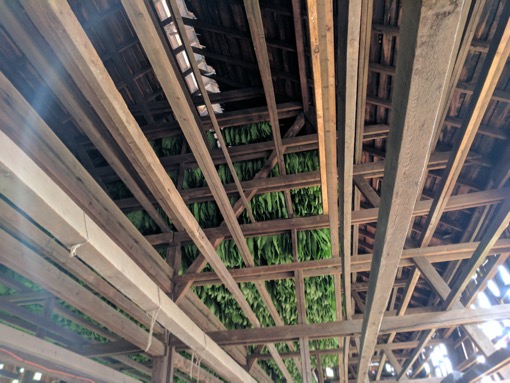
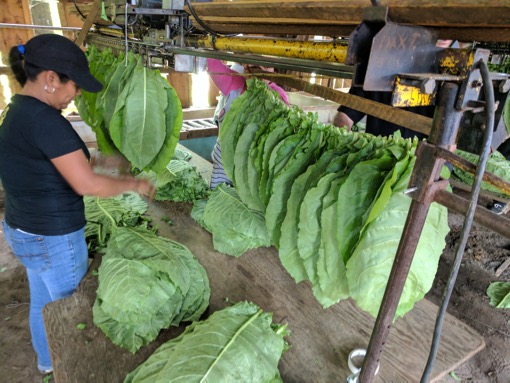
Leaves are sewn individually for curing, instead of being left on the stalk.
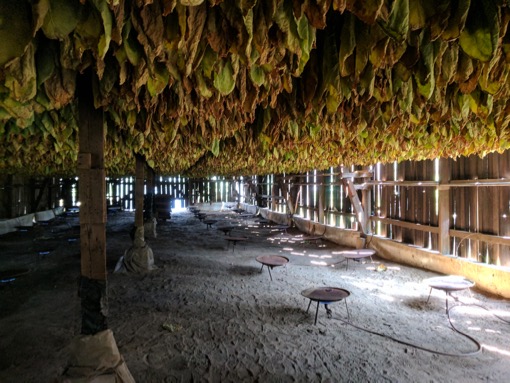
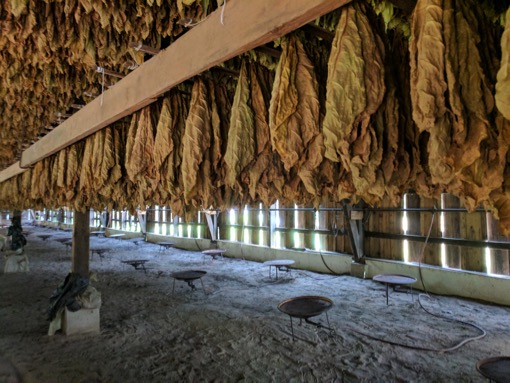
In addition, fields are left to fallow one year out of three, and rye is frequently grown (then plowed over) in the off-season to replenish nutrients in the soil.
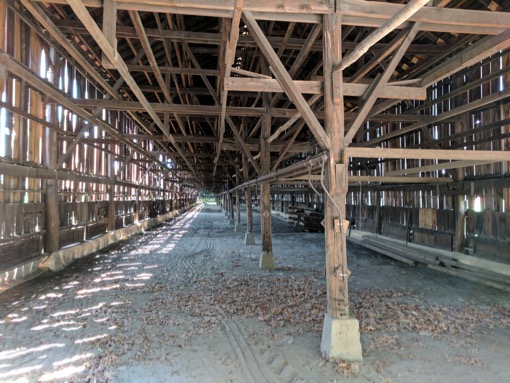
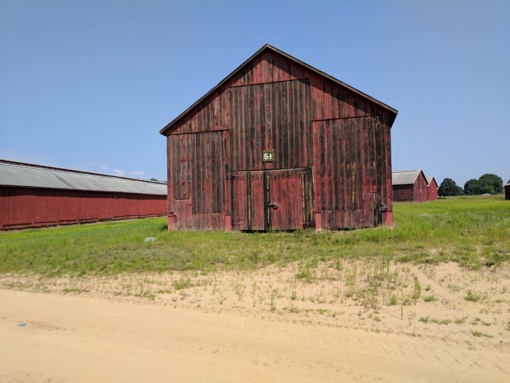
This is big business for Connecticut farmers, with each curing barn holding up to half a million dollars worth of tobacco, depending on the leaf type. Connecticut Shade is still the most expensive leaf grown in Connecticut, but Broadleaf and Habano are also grown in ample quantities.
If you are in the area in the late summer, drive around and you shouldn’t have too much trouble spotting tobacco fields. For those not lucky enough to visit foreign tobacco growing regions, Connecticut is the most accessible place to see the tobacco that ends up as a key component of the handmade cigars we enjoy.
– Patrick S
photo credits: Stogie Guys

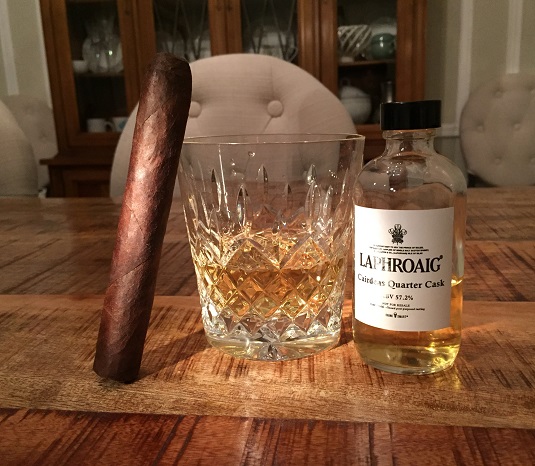
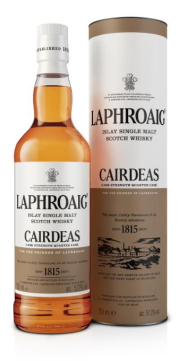 There’s certainly nothing wrong with scotch in the summer, though, especially when there’s a new release to try that stirs my interest. Case in point: the new Cairdeas Quarter Cask from Laphroaig. Cairdeas (“friendship†in Gaelic) is, according to Laphroaig, a response to market demand for “a cask-strength version of the popular Laphroaig Quarter Cask expression, which offers an irresistible doubling of flavor, due to the double maturation in two American oak barrels.â€
There’s certainly nothing wrong with scotch in the summer, though, especially when there’s a new release to try that stirs my interest. Case in point: the new Cairdeas Quarter Cask from Laphroaig. Cairdeas (“friendship†in Gaelic) is, according to Laphroaig, a response to market demand for “a cask-strength version of the popular Laphroaig Quarter Cask expression, which offers an irresistible doubling of flavor, due to the double maturation in two American oak barrels.â€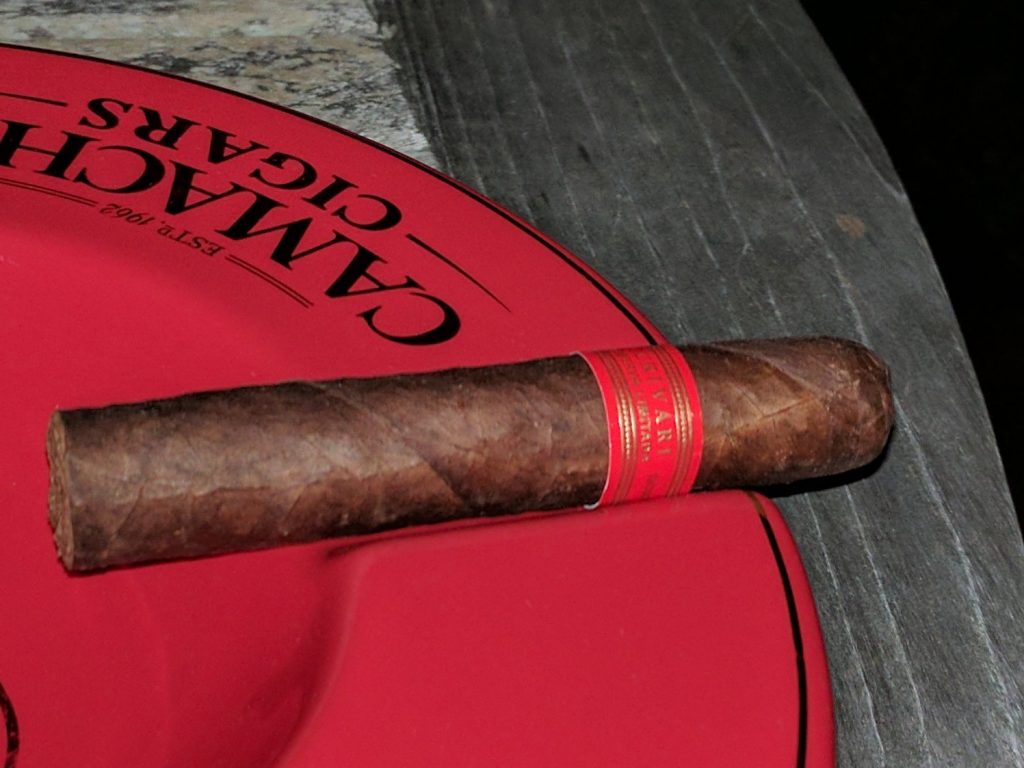
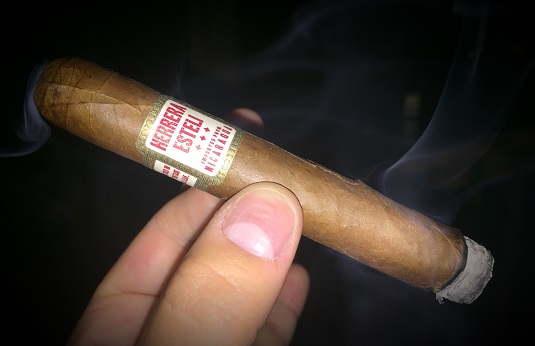
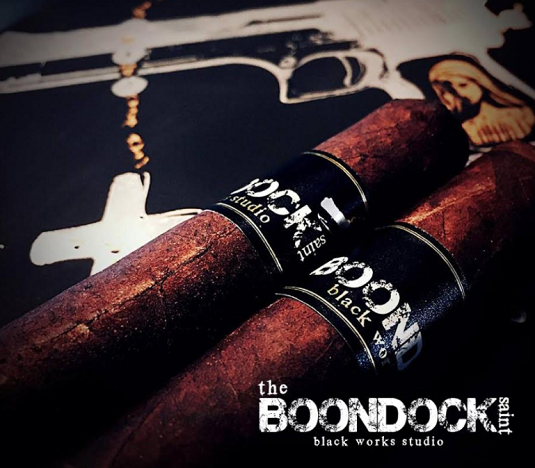
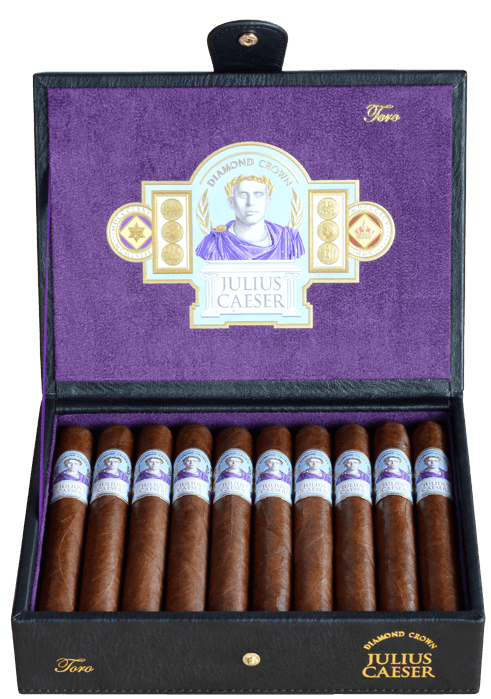
 Newman promotes Julius Caeser as a high-end premium, packaged in fancy boxes and originally available only at Diamond Crown lounges. In 2014, the robusto was named No. 14 on Cigar Aficionado’s Top 25 list.
Newman promotes Julius Caeser as a high-end premium, packaged in fancy boxes and originally available only at Diamond Crown lounges. In 2014, the robusto was named No. 14 on Cigar Aficionado’s Top 25 list.
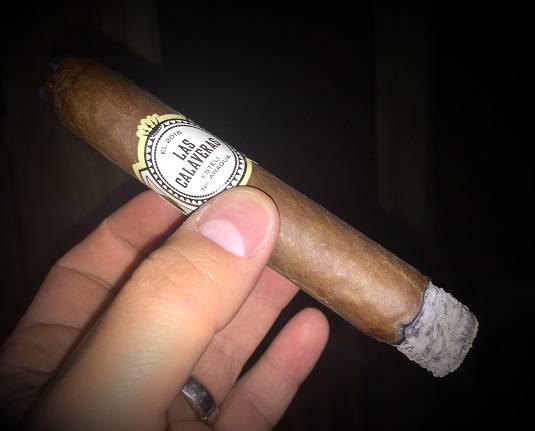
 Made at the My Father Cigars factory in EstelÃ, Nicaragua, the Las Calaveras tradition began in 2014 and continues today with a 2017 iteration that includes four vitolas and about 135,000 total cigars. Back in 2015, total production was only 90,000 cigars across three vitolas. So imagine my surprise when I recently stumbled across a stash of 2015 Las Calaveras cigars at one of my local tobacconists.
Made at the My Father Cigars factory in EstelÃ, Nicaragua, the Las Calaveras tradition began in 2014 and continues today with a 2017 iteration that includes four vitolas and about 135,000 total cigars. Back in 2015, total production was only 90,000 cigars across three vitolas. So imagine my surprise when I recently stumbled across a stash of 2015 Las Calaveras cigars at one of my local tobacconists.
 Patrick Ashby
Co-Founder & Editor in Chief
Patrick Ashby
Co-Founder & Editor in Chief Patrick Semmens
Co-Founder & Publisher
Patrick Semmens
Co-Founder & Publisher George Edmonson
Tampa Bureau Chief
George Edmonson
Tampa Bureau Chief